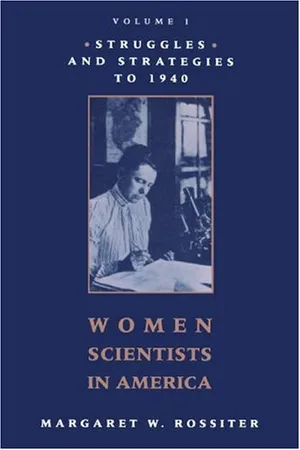In 1969, Margaret Rossiter, then 24 years old, was one of the few women enrolled in a graduate program at Yale devoted to the history of science. Every Friday, Rossiter made a point of attending a regular informal gathering of her department’s professors and fellow students. Usually, at those late afternoon meetings, there was beer-drinking, which Rossiter did not mind, but also pipe-smoking, which she did, and joke-making, which she might have enjoyed except that the brand of humor generally escaped her. Even so, she kept showing up, fighting to feel accepted in a mostly male enclave, fearful of being written off in absentia.
During a lull in the conversation at one of those sessions, Rossiter threw out a question to the gathered professors. “Were there ever women scientists?” she asked. The answer she received was absolute: No. Never. None. “It was delivered quite authoritatively,” said Rossiter, now a professor emerita at Cornell University. Someone did mention at least one well-known female scientist, Marie Curie, two-time winner of the Nobel Prize. But the professors dismissed even Curie as merely the helper to her husband, casting him as the real genius behind their breakthroughs. Instead of arguing, though, Rossiter said nothing: “I realized this was not an acceptable subject.”
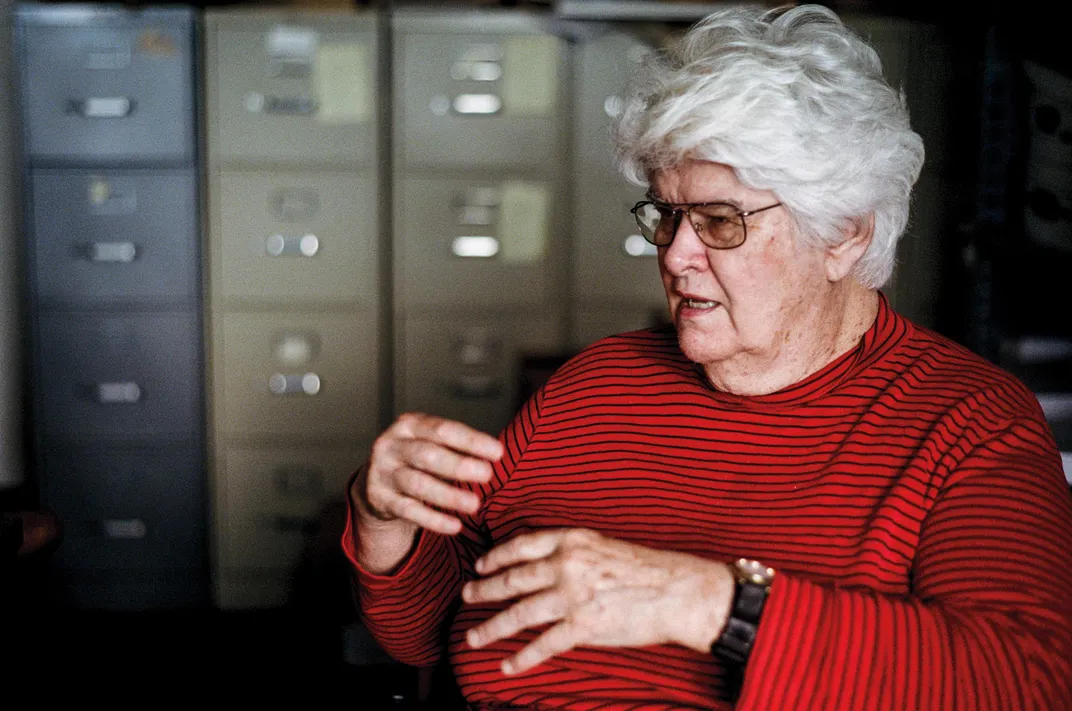
Acceptable or not, the history of women in science would become Rossiter’s lifework, a topic she almost single-handedly made relevant. Her study, Women Scientists in America, which reflected more than a decade of toil in the archives and thousands of miles of dogged travel, broke new ground and brought hundreds of buried and forgotten contributions to light. The subtitle—Struggles and Strategies to 1940—announced its deeper project: an investigation into the systematic way that the field of science deterred women, and a chronicling of the ingenious methods that enterprising women nonetheless found to pursue the knowledge of nature. She would go on to document the stunted, slow, but intrepid progress of women in science in two subsequent volumes, following the field into the 21st century.
“It is important to note early that women’s historically subordinate ‘place,’ in science (and thus their invisibility to even experienced historians of science) was not a coincidence and was not due to any lack of merit on their part,” Rossiter wrote at the outset in the first volume. “It was due to the camouflage intentionally placed over their presence in science.”
Rossiter’s research has been “revolutionary,” said Anne Fausto-Sterling, a Brown University professor emerita and an expert on developmental genetics, who was astonished by the first volume when it came out. “It meant that I should never believe anything anybody tells me about what women did or didn’t do in the past, nor should I take that as any measure of what they could do in the future.”
Academic historians typically don’t have an immediate impact on everyday life. Rossiter is the exception. In excavating the lives of forgotten women astronomers, physicists, chemists, entomologists and botanists, Rossiter helped clear the way for women scientists in the future. “Her work showed that there were women in science, and that we could increase those numbers, because women are quite capable of it,” said Londa Schiebinger, a historian of science at Stanford University. In addition, Rossiter’s work illustrated that administrators needed to reform academic institutions to make them more hospitable to women. “She showed that very talented women faced barriers—and so that sparks something.”
Rossiter’s findings were impressive to key figures at the National Science Foundation, which funded her research over many years—and which, starting in the 1980s, also began funding efforts to increase “the representation and advancement of women in engineering and academic science degrees.” Schiebinger said, “All of Margaret Rossiter’s well-documented work gives an intellectual foundation for these things.”
Today, Rossiter, 75, has scaled back her research efforts and carries a light teaching load at Cornell. But her work remains deeply important, in large part because she knew how to make a point stick. Back in 1993, Rossiter coined a phrase that captures an increasingly well-recognized phenomenon: the Matilda Effect, named after a suffragist, Matilda Gage, whose own work was overlooked by historians, and who also wrote about the way women scientists, in particular, had been erased by history. Rossiter’s 1993 paper decried the troubling recent history of male scientists receiving credit for work done by female scientists. The phrase—the Matilda Effect—took off, and has been cited in hundreds of subsequent studies. A 2013 paper, “The Matilda Effect in Science Communication,” reported that both men and women judged research papers by men to be stronger than those by women, and both men and women showed preference for the male authors as possible future collaborators. In the past year alone, dozens of papers on gender discrimination in science have cited the Matilda Effect. In naming the phenomenon, Rossiter identified the issue of misplaced credit as a problem that institutions would have to fight to rectify, and that equality-minded scholars are monitoring with even more rigor.
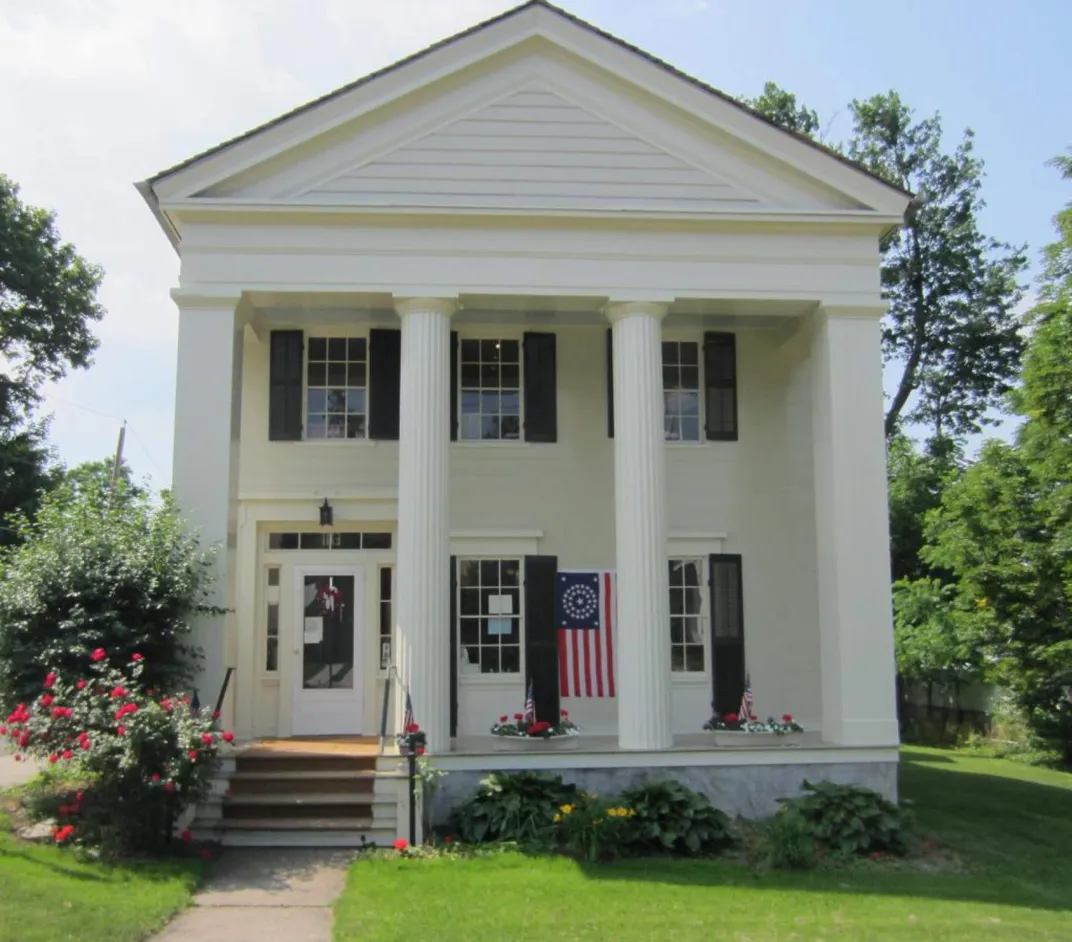
Both Margaret Rossiter and Matilda Gage made substantial original contributions to American scholarship that were, for too long, not recognized as significant; and, interestingly, both tried to bring to light the work of other women who suffered the same fate. Their births separated by more than a century, the two nonetheless have almost a symbiotic relationship, with the work of one giving new life to that of the other in a collaboration across time to advance the role of women in the sciences, a fight ongoing in laboratories and the halls of academia.
* * *
The Matilda Joslyn Gage Center, in Fayetteville, New York, is a gracious cream-colored Greek Revival building, renovated and restored to something close to the state it was in when Gage was working furiously to secure women the right to vote. A small desk in the bay window of the back parlor is the same one where she likely wrote dozens of editorials for her newspaper, the National Citizen and Ballot Box, the official publication of the National Woman Suffrage Association; upstairs was the guest bedroom where the suffragist Susan B. Anthony, with whom she frequently collaborated, often stayed.
On the day I agreed to meet Rossiter there (she lives in Ithaca, 60 miles to the south), Colleen Pilcher, then the museum’s deputy director, was waiting to greet her. She had prepared tea and set aside time for a tour. The museum’s founder, a historian named Sally Roesch Wagner, who has devoted much of her career to uncovering Gage’s achievements, left a note saying she was sorry not to be there to see Rossiter, “to whom we are so grateful for creating the concept of the Matilda Effect, which we refer to regularly.”
Rossiter looked around, taking in a framed photo of Gage propped on a side table: Gage, her curly hair by then gray, stared out in profile, intent and focused. “Think what they were up against,” Rossiter said, speaking of the suffragists. “Men controlled everything—the press, the church, every local and national political office. They had all the power, everywhere.”
Gage was the daughter of an exceptionally forward-thinking father, an abolitionist and doctor who raised his daughter to practice medicine. No medical school in her area would accept a woman, so instead, while the mother of five children, she channeled her intellect into abolitionist activism (her home was a stop on the Underground Railroad), as well as the burgeoning suffragist movement. She spoke at the third National Woman’s Rights Convention in Syracuse, in 1852, and was a founding member of (and frequent officeholder in) the National Woman Suffrage Association.
A freethinker who championed the separation of church and state, Gage was also the first known American woman to publish a study of American women in science—anticipating Rossiter by a century. In “Woman as an Inventor,” published as a tract in 1870 and in the North American Review in 1883, she wrote, “The inventions of a nation are closely connected with the freedom of its people.” Given more liberty, she argued, women would only help the country’s technological progress. To support her argument, she listed many of the inventions women had initiated (the baby carriage, “a volcanic furnace for smelting ore,” the gimlet-point screw, to name a few). Gage also asserted—a contention some historians consider—that Eli Whitney merely manufactured the cotton gin after being given very specific directions by its actual inventor, Catharine Littlefield Greene, widow of Revolutionary War general Nathanael Greene, who had settled in Georgia. “Every part of the world felt the influence of this woman’s idea,” wrote Gage. If Greene did not take out a patent for the invention, Gage said, it was because “to have done so would have exposed her to the ridicule and contumely of her friends and a loss of position in society, which frowned upon any attempt at outside industry for woman.”
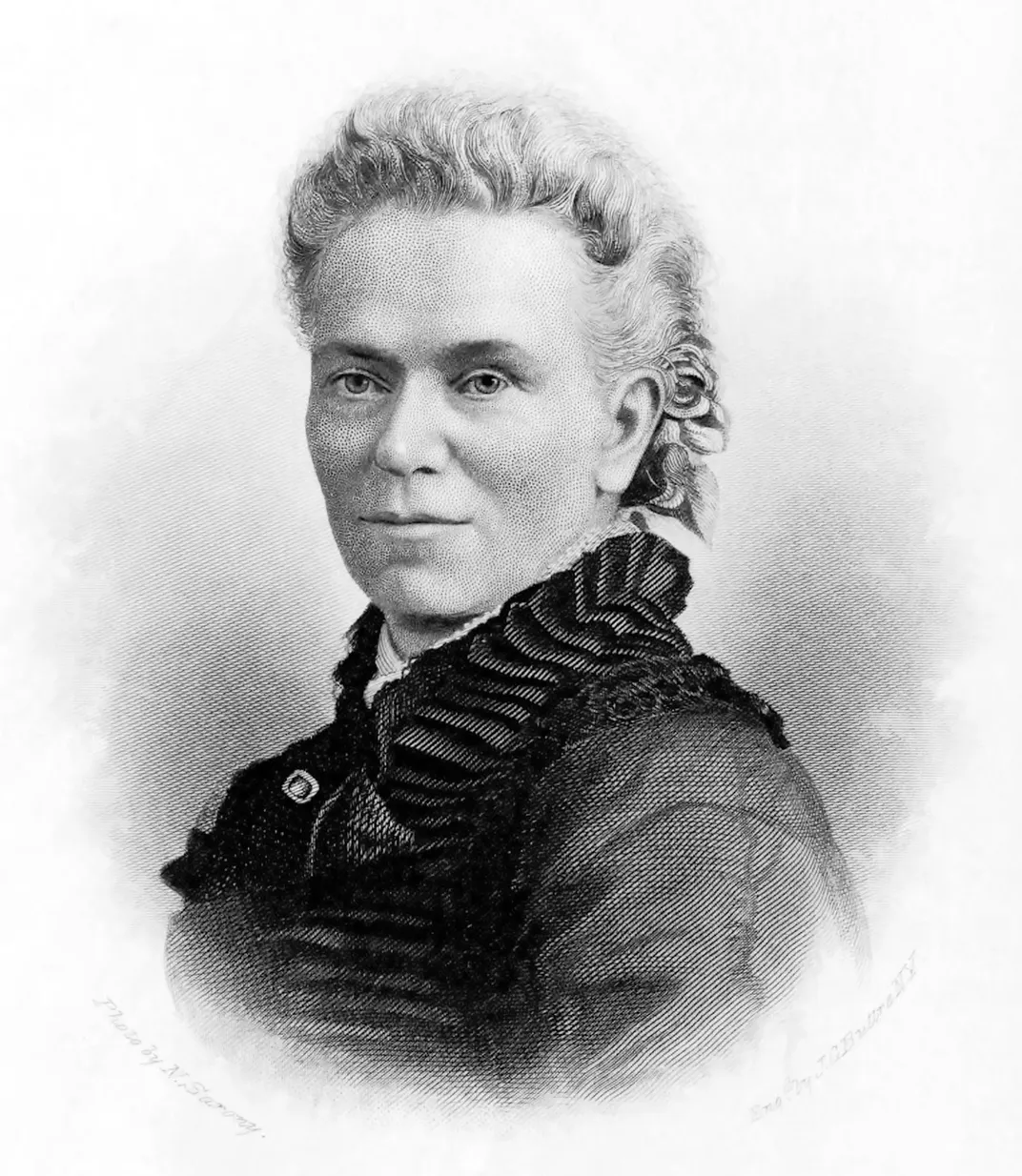
Rossiter first learned about Gage in the early 1990s, while reading a relatively obscure book about overlooked women intellectuals. Soon after that, in 1993, Rossiter attended a conference at which researchers presented several papers on women scientists whose work had wrongly been credited to men. “It was a phenomenon,” Rossiter recalled thinking. “You need to name it. It will stand larger in the world of knowledge than if you just say it happened.” She decided on the “Matilda Effect,” after Matilda Gage, and wrote an essay in the journal Social Studies of Science that she called “The Matthew Matilda Effect in Science.” (The Matthew Effect was a term coined previously by two sociologists, to describe the practice of more powerful scientists being given credit for the work of those with less recognition.) Gage, Rossiter wrote in that essay, “noticed that the more woman worked the more the men around her profited and the less credit she got.”
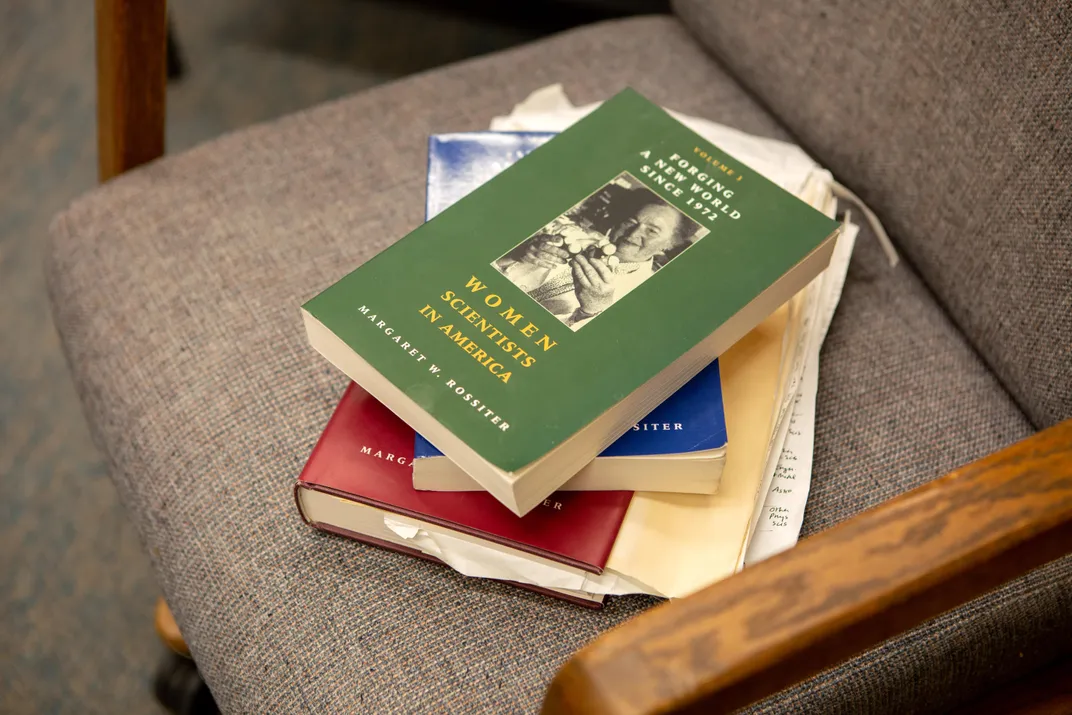
The purpose of naming the phenomenon, Rossiter asserted in her essay, was to “help current and future scholars to write a more equitable and comprehensive history and sociology of science that not only does not leave all the ‘Matildas’ out, but calls attention to still more of them.”
Out of the Shadows
Rossiter’s historical research has spotlighted hundreds of women scientists in america. here are a few of the most notable who persevered to expand our understanding of the universe, from black holes to genes to computers
Barbara McClintock (1902-1992)
/https://tf-cmsv2-smithsonianmag-media.s3.amazonaws.com/filer/dc/dc/dcdc5351-4b8c-4443-98ac-501e7334185a/oct2019_h20_matildaeffect.jpg)
The cytogeneticist was the first woman to receive an unshared Nobel Prize in Physiology or Medicine, awarded in 1983. She traveled extensively for two decades to collect maize samples in South and Central America. Her research demonstrated the existence of “mobile genetic elements,” also known as genetic transposition, the capacity of genes to change position on a chromosome.
Grace Murray Hopper (1906-1992)
/https://tf-cmsv2-smithsonianmag-media.s3.amazonaws.com/filer/3f/1e/3f1ec95a-e0ae-463e-8fe0-7f318fdd3fc5/oct2019_h22_matildaeffect.jpg)
A mathematician, computer scientist and rear admiral in the U.S. Navy, Hopper led the Eckert-Mauchly Corporation team in the 1950s that created the first computer language compiler; the breakthrough program translated English language instructions into machine code understood by computers.
Marie Maynard Daly (1921-2003)
/https://tf-cmsv2-smithsonianmag-media.s3.amazonaws.com/filer/d5/12/d51260b2-36b3-480e-aed1-b6ee640f2788/oct2019_h16_matildaeffect.jpg)
Daly became the first African-American woman in the United States awarded a PhD in chemistry, from Columbia University in 1947. Her pioneering work investigated the links between cholesterol and heart disease and the effects of cigarette smoking on the lungs.
Maria Mitchell (1818-1889)
/https://tf-cmsv2-smithsonianmag-media.s3.amazonaws.com/filer/fa/1c/fa1c7870-ee70-4d8f-81a7-c0c150d467f8/oct2019_h18_matildaeffect.jpg)
During observations of the sky one night in 1847, the astronomer discovered a comet, popularly known as “Miss Mitchell’s Comet,” formally designated as C/1847 T1. In 1865, she became the first professor appointed at newly founded Vassar College.
Flossie Wong-Staal (born 1947)
/https://tf-cmsv2-smithsonianmag-media.s3.amazonaws.com/filer/73/6f/736f9543-e159-4219-b238-06a280f37e99/oct2019_h13_matildaeffect.jpg)
Wong-Staal emigrated from China to study at UCLA. The virologist and molecular biologist was the first to clone HIV and genetically map the entire virus.
Jewel Plummer Cobb (1924-2017)
/https://tf-cmsv2-smithsonianmag-media.s3.amazonaws.com/filer/d3/c2/d3c2c96d-2e71-41be-8b7d-4756a617c9ee/oct2019_h15_matildaeffect_copy.jpg)
A cell biologist and cancer researcher, she studied melanoma and made early advances in tissue culture as well as translational medicine; her studies showed that in vitro observation of chemotherapy agents could predict effective treatments for some subcategories of cancers.
Elizabeth Blackburn (born 1948)
/https://tf-cmsv2-smithsonianmag-media.s3.amazonaws.com/filer/35/14/3514f3f5-95bd-4ecb-beb6-99004fb09811/oct2019_h21_matildaeffect.jpg)
The molecular biologist won the Nobel Prize in Physiology or Medicine in 2009, with colleagues Carol Greider and Jack Szostak, for discovering telomeres, DNA segments at the ends of chromosomes.
Vera Cooper Rubin (1928-2016)
/https://tf-cmsv2-smithsonianmag-media.s3.amazonaws.com/filer/4f/66/4f66b72f-1b07-42fb-8430-494197e0cb4b/oct2019_h14_matildaeffect.jpg)
By establishing evidence for the existence of “dark matter” and its gravitational pull, Rubin, a lifelong advocate for the advancement of women in science, transformed the field
of cosmology.
Chien-Shiung Wu (1912-1997)
:focal(2708x1199:2709x1200)/https://tf-cmsv2-smithsonianmag-media.s3.amazonaws.com/filer/8a/c6/8ac617f0-cd88-4f19-bbef-e04065710a51/oct2019_h19_matildaeffect.jpg)
The experimental physicist emigrated from China in the 1930s and was recruited to the Manhattan Project, where she worked on uranium enrichment. Her work on the law of parity in physics helped earn two male colleagues the 1957 Nobel Prize in Physics, but she did not share in the award.
Frances Oldham Kelsey (1914-2015)
/https://tf-cmsv2-smithsonianmag-media.s3.amazonaws.com/filer/10/e3/10e300b7-f1bd-4478-961c-9ee94087c395/oct2019_h12_matildaeffect.jpg)
A pharmacologist and physician at the FDA, she came under pressure in the 1960s to approve thalidomide for morning sickness. Insisting that safety tests were inadequate, she refused—thus preventing countless birth deformities caused by the drug, which had already been approved in 46 countries.
Klara Dan von Neumann (1911-1963)
/https://tf-cmsv2-smithsonianmag-media.s3.amazonaws.com/filer/2a/37/2a37ea91-84fd-423e-80b4-3f107db56d8d/oct2019_h17_matildaeffect.jpg)
The self-taught mathematician was a primary developer of coding for the 1940s ENIAC computer. Yet she is not listed as an author on the paper announcing that work.
Rossiter cited one victim of the Matilda Effect who dated back to the 11th century, but also included more recent examples such as Jocelyn Bell Burnell, a doctoral student in radio astronomy at Cambridge University in the late 1960s. Bell Burnell was the first in her lab to discover the astronomical object that would lead to the identification of pulsars. Despite her obvious contributions, she was not included in the all-male citation when her team won the physics Nobel Prize for this work in 1974. Last year, 25 years after Rossiter acknowledged Bell Burnell’s accomplishments, and 44 years after she was robbed of the Nobel, Burnell won the Special Breakthrough Prize. The award comes with $3 million, all of which she donated to England’s Institute of Physics, to fund underrepresented figures—women, refugees and ethnic minorities. “I have this hunch that minority folk bring a fresh angle on things,” Burnell told the BBC.
* * *
Rossiter thought that her first visit to the Gage museum would be a pleasant excursion to a historical site of personal interest to her. Instead, it turned out to be something of a revelation. It was not, in fact, the patriarchy that wrote Matilda Gage out of history, Pilcher explained, citing decades of research by her colleague Wagner. The powerful figures who marginalized Gage were her two fellow suffragist collaborators, after a falling out over the role of religion in the movement.
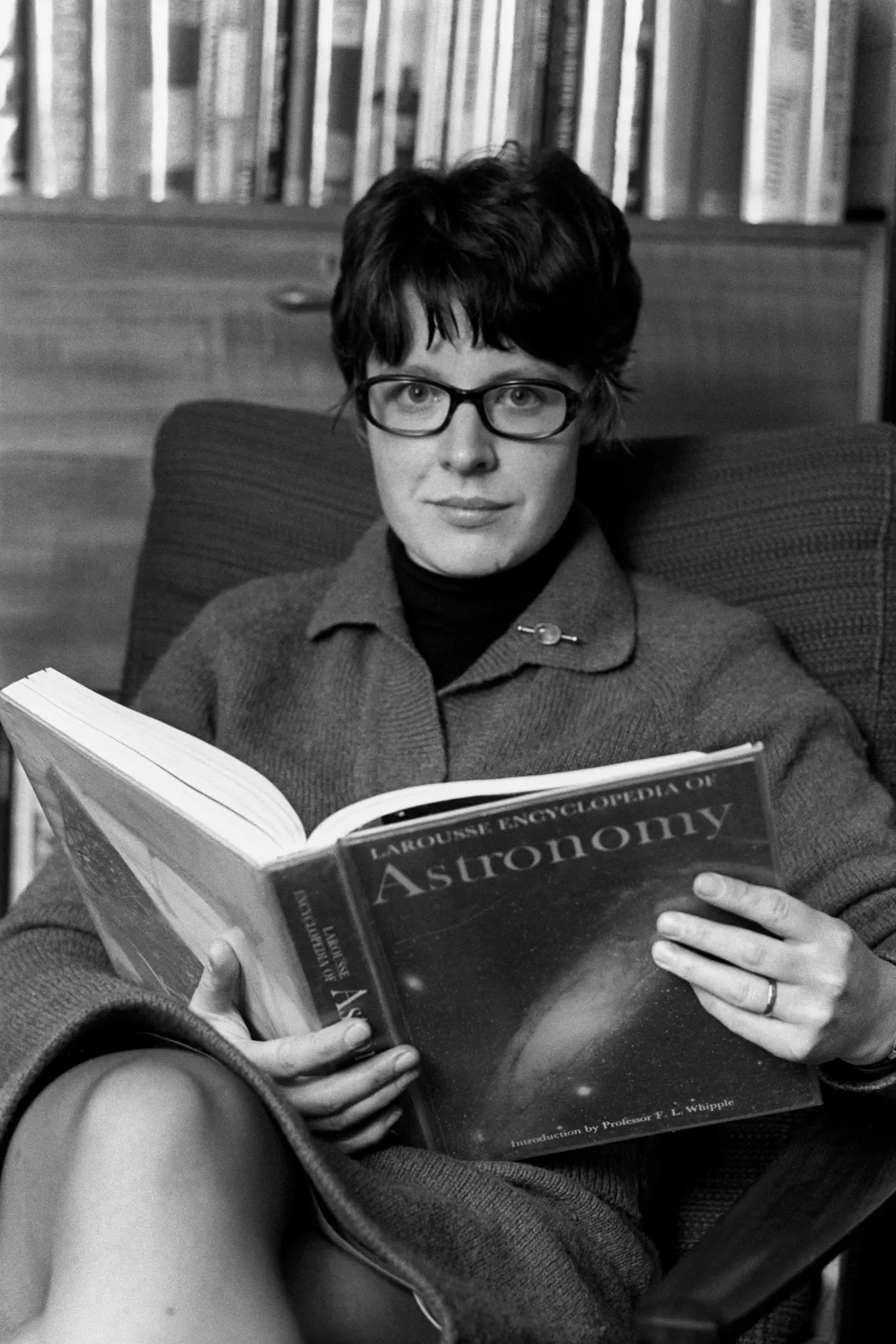
“Gage felt that Christianity was the root of women’s problems,” Pilcher said. Elizabeth Cady Stanton’s writings, Pilcher explained, would later reveal how strongly Stanton concurred; but in the desperate pursuit of an expanding constituency to support the vote for women, Stanton and Susan B. Anthony made what they must have perceived as necessary compromises. They collaborated with religious women’s groups, including the Temperance Union run by Frances Willard, which wanted to establish Jesus as the titular head of the United States government. The move alienated Gage, who split from Stanton and Anthony to found her own, competing suffragist group. When Stanton and Anthony revised a work on which Gage had originally collaborated, the History of Woman Suffrage, Gage was no longer listed as an author.
“Hmm!” Rossiter exclaimed, clearly fascinated. “You would have thought they’d have been more sisterly.” It was fortunate, she added, that the house still stood. It was here that Wagner had discovered a trove of letters that shed so much light on this hidden figure of history. “If the house had burned down,” Rossiter said, “that would have been the end of it.”
It is an odd wrinkle of feminist history that one of the most powerful terms used to identify overlooked female scientists has been named after a woman diminished not by male credit-grabbers but arguably the two most influential feminists in American history. In their effort to win the vote, Stanton and Anthony made choices that bowed to traditional power structures—some of them racist, some of them based in the church, and all of them controlled by men. In that regard, perhaps, it could be said that it was the male establishment that coerced Stanton and Anthony to erase Gage. “But in the ‘end,’ patriarchy eliminated even Susan B. Anthony and Elizabeth Cady Stanton,” Rossiter later wrote in an email. “Because in my day (undergrad and grad in the 1960s) all women’s history had been forgotten or obliterated and was not taught at much of any colleges. When the founders of women’s history began to start research and writing (1970s), they all had to bone up and read Eleanor Flexner’s Century of Struggle, the only survey of the subject and for which the author had had a hard time finding a publisher.”
* * *
“Fifth generation of Malden, Mass.,” Rossiter likes to say of her birth, as if that New England pedigree reveals much about her essence. Malden may be little known, but its history of resistance is rich: It was the first town to petition the colonial government to secede from British rule. The first same-sex couple to get legally married in the United States was from Malden (they were married in nearby Cambridge). Rossiter’s father was a Harvard graduate and high school history teacher; and her mother, who graduated from Radcliffe, raised her children, only working outside the home later in life, after receiving a master’s degree. By high school, Margaret Rossiter, a bookish girl in a bookish home, had developed a fascination with the history of science. “Margaret, who plans to study math at Radcliffe this Fall, lists biographies of the 17th century as her favorite reading matter,” the Boston Globe reported in 1962, in an article that celebrated Rossiter as one of several National Merit Scholarship winners from the area. “That was before Newton developed the calculus,” 17-year-old Rossiter was quoted saying. She went on to Radcliffe, and would graduate in 1966. Even in her first year she remembers poring over Isis, the history of science journal, in a top bunk in her dorm room.
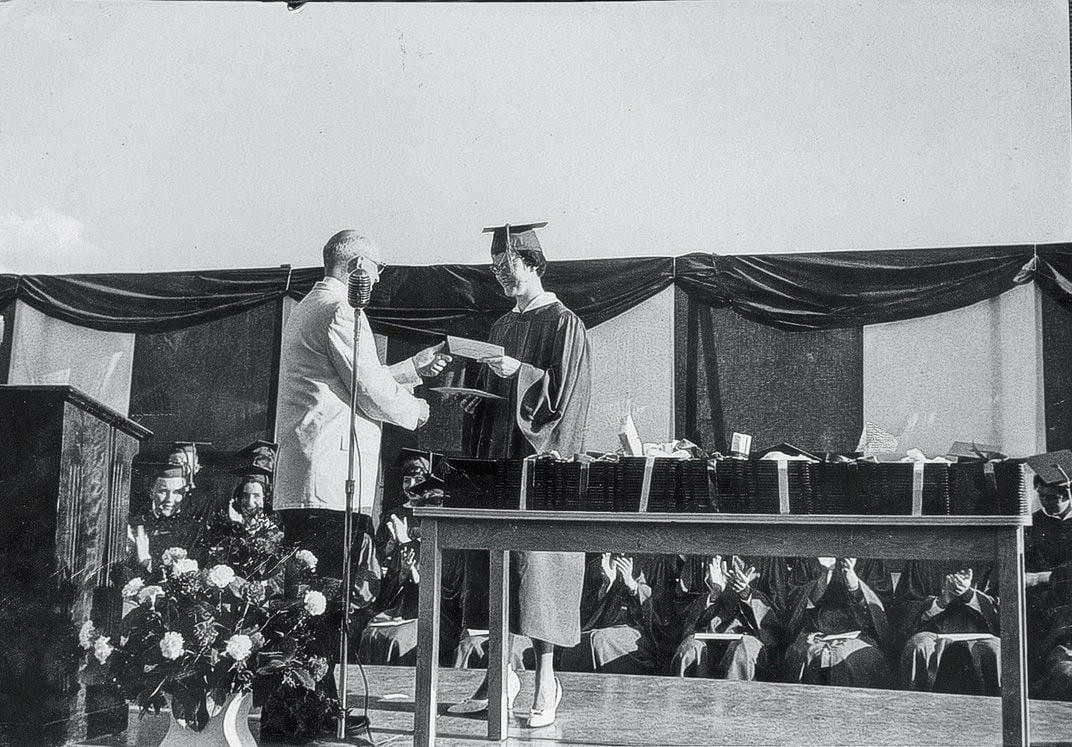
Following an unsatisfying grad-school stint at the University of Wisconsin, Rossiter transferred to Yale, which is where she found herself, on Friday afternoons, surrounded by pipe smoke, beer and history of science professors and students, nearly all male. “From 4:30 to 6,” Rossiter said, “you endured this for self-preservation.” Mary Ellen Bowden, also a history of science graduate student at the time, would become a senior research fellow at the Science History Institute. She recalls Rossiter, as a graduate student, as someone “who seemed like a quiet sort, but once you got her one on one, talked on and on—she was very perceptive and critical of the things going on around her. Some scholars just hit the books, but Margaret had other interests in humanity.” Rossiter completed her PhD at Yale, in 1971, a rare woman in a small, backward-looking field, and took a fellowship at Harvard, where she happened, one afternoon, to peruse American Men of Science, a kind of encyclopedic history. Despite the certainty of her mentors at Yale about the nonexistence of women scientists, and despite the very title of the volume, she was surprised to see entries about women—botanists trained at Wellesley, geologists from Vermont. There were names, and patterns she could trace from one to the other. (Rossiter also would conduct research on women in science at Smithsonian Institution archives and libraries in Washington, D.C.)
In Malden she picked up the family Volkswagen, then drove around to women’s colleges, delving into boxes of archives. She identified what she called “protégé chains” of women educated by professors who then went on to replace those professors, some tracing their lineage back several generations. Scouring indexes for obituaries, she discovered women scientists—but they were segregated, cloistered at women’s colleges (she defined this as “territorial segregation”); or they were undervalued, underpaid, kept in assistant jobs where they did mountains of tedious work, never promoted like their male counterparts (“hierarchical segregation”). She also discovered, reading letters of recommendation, a way of thinking she called “restrictive logic,” in which male scientists relied on nonsensical rationales to explain why a particular female scientist could not be promoted (a classic example: because there was no precedent). She found, in short, that many men of science were incapable of reason when it came to women. Women’s credentials, she wrote, “were dismissed as irrelevant in favor of stereotypes, fears, and long-cherished views.” Examining, for example, the collective efforts of male professors to halt the likely appointment to a full professorship of the famous German physicist Hertha Sponer, at Duke, Rossiter vented that “Sponer was evidently up against not only all the other applicants for a job at Duke in 1936 but also certain physicists’ collective views and misconceptions about all of womankind.”
Rossiter herself, more than a decade out of graduate school, still had failed to secure a tenured position, and was a visiting scholar at Cornell. “Margaret knew she deserved to be on a tenure track,” Fausto-Sterling recalls, “and something was wrong that she was not—it wasn’t like, ‘Oh, I’m so lucky to have any job.’ It was, ‘This is not right.’”
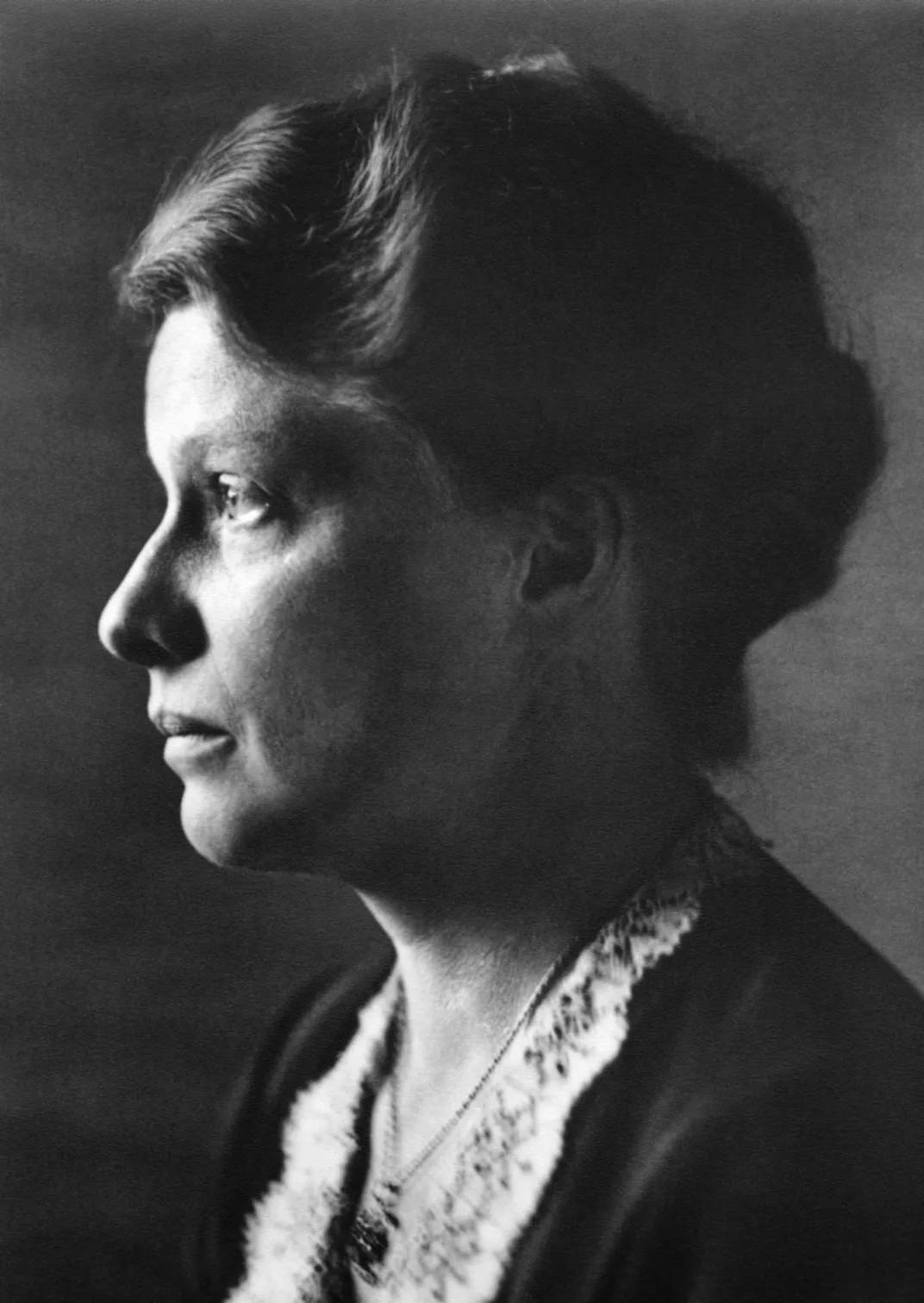
Then, in late 1982, Rossiter published the first volume of Women Scientists in America, with Johns Hopkins University Press. To her surprise and her publisher’s, the New York Times gave the historical tome a rave review. “The rich detail she discovered about the history of American women scientists is placed in the context of social change in the 19th and 20th centuries, and the result is a splendid book,” wrote the reviewer, Alice Kimball Smith, a historian.
Rossiter was a visiting scholar at Cornell when she was awarded a MacArthur Fellowship (or the so-called genius grant) in 1989. The following spring of 1990, a tenure-track offer arrived from the University of Georgia. Even so, Cornell seemed ready to let her depart. She thinks a female member of the Cornell board of trustees intervened, because, suddenly, Cornell offered to create a new department aligned with Rossiter’s interests—the Graduate Program in the History and Philosophy of Science and Technology. Tenure followed in 1991. “I remember being so relieved—now I could get back to my next book, instead of apartment hunting,” said Rossiter. After many years of identifying with the struggles of those whom she was studying, at last she found the kind of institutional support to document the obstacles faced by those who did not have such support but deserved it.
It is not only women in science who have much to learn from Rossiter’s research, said M. Susan Lindee, a historian of science at the University of Pennsylvania. “We have to look at her past work carefully,” said Lindee, “and re-examine all those brilliant strategies that women used to contest institutional power, which was oriented around preventing them from succeeding.”
In 2013, Fausto-Sterling, whose own work has challenged sexist presumptions in evolutionary science, stepped forward to make sure that Rossiter’s contributions would be widely accessible. Fausto-Sterling joined forces with a former student of hers, Maia Weinstock, who had led a series of Wikipedia edit-a-thons, events where volunteers amplified entries about the lives and achievements of female scientists published in the free, crowd-sourced online encyclopedia. Fausto-Sterling found that Rossiter, at that point, merited only what’s known as a stub—a few lines. “I was shocked that she had this skeleton entry,” said Fausto-Sterling, who went on, during that editing session, to contribute a fleshed-out entry about Rossiter.
Rossiter was one of the first to map out a problem in science that its practitioners are only now struggling to address with peak urgency: Earlier this year, the prestigious medical journal the Lancet devoted an entire issue to the underrepresentation of women in science, announcing, among other things, that less than 30 percent of the world’s researchers in science are women. The Lancet studies took up many of the questions that Rossiter first posed in 1982. What biases are holding women back? Where are their numbers lowest, and why? Why do they receive less funding than men? But the mistreatment of women in science and other professions had already caught fire in the public imagination with the rise of the #MeToo movement.
* * *
The University of California, Berkeley found in 2015 that the prominent astronomer Geoffrey Marcy had violated its sexual harassment policy. A 2018 report from the University of Texas system found that about 20 percent of female science students, more than 25 percent of female engineering students and more than 40 percent of female medical students had experienced sexual harassment from faculty or staff. This year, Dartmouth reached a settlement of $14 million with nine women who alleged that three tenured professors in the Psychological and Brain Sciences department had been allowed to cultivate an environment of sexual harassment and discrimination.
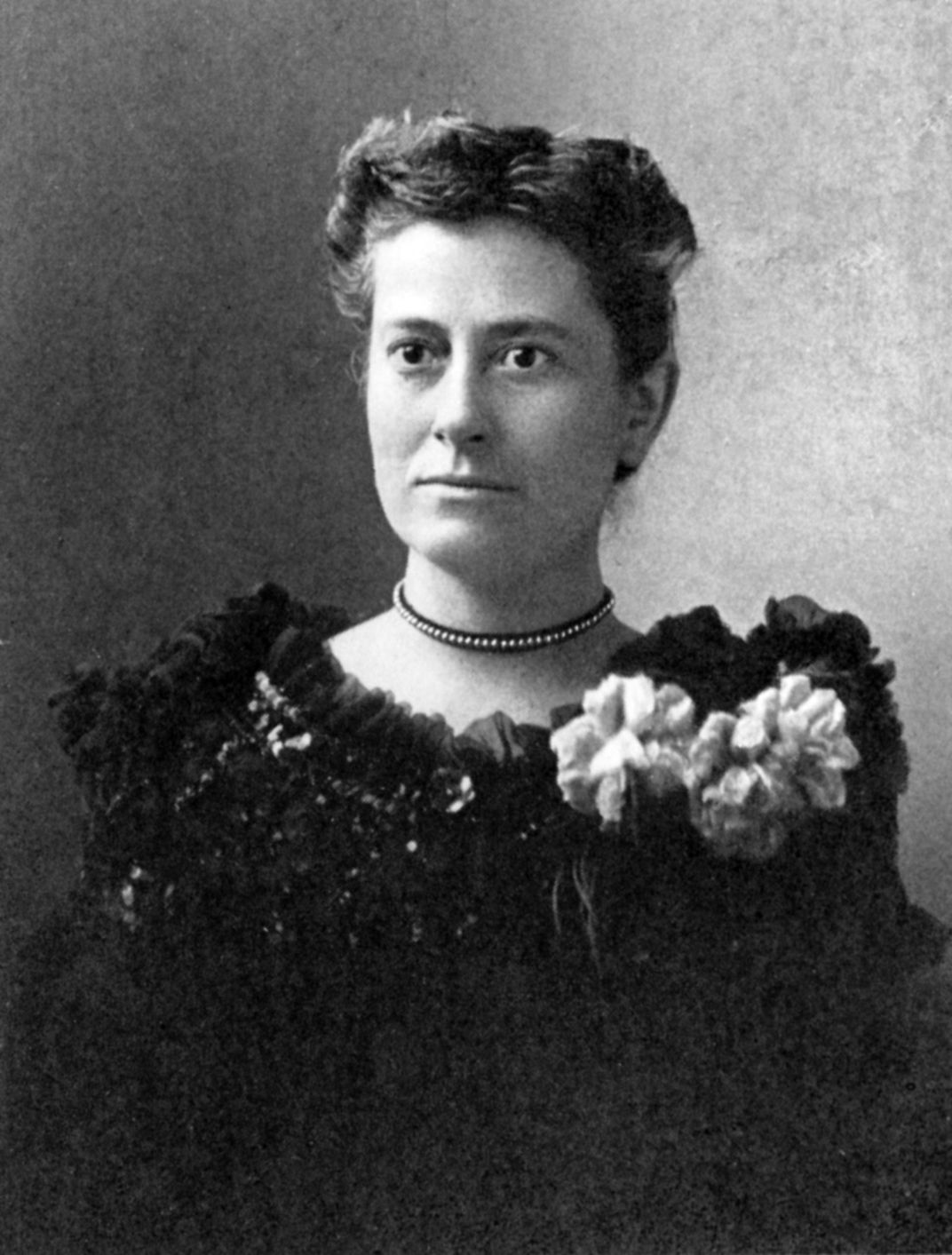
It is fascinating, then, that Rossiter could have written no fewer than 1,200 pages about women in science—who had even less power and fewer rights during the period she covered than they do now—without so much as a hint that sexual harassment and, quite likely much worse, drove some women away from the sciences. Until recently, Rossiter said, she had not considered just how powerful a role harassment or assault must have played in the history of women in science. “It explains the dropout rate,” she said.
Rossiter said she never experienced any sexual harassment herself; and never knew, for example, that more than one of her professors at Yale shocked her fellow student Mary Ellen Bowden by making sexual overtures. “I remember feeling like it was my fault, ‘Oh, I must have led him on,’” said Bowden, who realized only with the advent of the #MeToo movement that she was not to blame—and that she should have been protected from harassment.
If Rossiter’s fellow student and friend was not revealing her secrets in real time, neither were the scores of women, long dead, whom Rossiter was studying through their letters, reviews, prizes and pay stubs. She coaxed, from those dusty papers in cardboard boxes, administrative workings and ventings about pay and overt biases and self-justifying rationales; she cross-referenced job trends with hiring patterns, the professionalization of a field with college graduation rates. But it is clear only now how much more those archives hid than they disclosed.
“Nobody ever mentioned anything,” said Rossiter. “Those women likely just disappeared from the field.” M. Susan Lindee, the science historian from the University of Pennsylvania, said she is not surprised that those issues did not surface in the documents. “There was no infrastructure, no way for it to show up in administrative records,” said Lindee, who nonetheless believes that harassment “must have been everywhere.”
Perhaps a future scholar, were she or he to sift through the same thousands of documents that Rossiter examined, might read between the lines of those letters and administrative files. There must have been incidents of harassment and violence, but also genuine office love affairs, complicating resentments that male colleagues felt about women in the workplace; there would have been ambition punished with shame, and compromise mixed with resignation.
When Rossiter started her research, the Xerox was fresh technology; she worked with paper trails, but of a certain discreet kind. Archivists were discouraged from acquiring papers that were too personal. “I never saw a love letter, any financial materials, nothing on health, hardly anything about children,” she wrote in an email. “What I did was a kind of preliminary mapping.”
Rossiter frequently goes to her office at Cornell, stacked with boxes overflowing with paper, but she cannot get into the basements and attics where families tended to stash their great-grandmother’s letters. She is not terribly interested in digital research; for her, nothing is more satisfying than a manila envelope full of long-ignored documents.

In one of those many cartons in Rossiter’s office is a letter, from a woman scientist, that was particularly meaningful to Rossiter, mailed not long after the publication of her first volume of Women Scientists. “I greatly enjoyed your work,” Rossiter recalled the letter as saying. The woman went on, “I have spent a lot of money on psychotherapy because people kept telling me I was maladjusted.”
Rossiter, with one well-constructed sentence—“As scientists they were atypical women; as women they were unusual scientists”—had made it clear to this particular woman that she was not the problem. Society’s restrictions were the problem.
Rossiter’s book, the woman said, had done more to help her than therapy.
This was revelatory. It had never occurred to Rossiter, she said, that a clear rendering of history could be so useful.
A Note to our Readers
Smithsonian magazine participates in affiliate link advertising programs. If you purchase an item through these links, we receive a commission.
:focal(428x599:429x600)/https://tf-cmsv2-smithsonianmag-media.s3.amazonaws.com/filer/6b/ce/6bce0063-1a80-423f-80bb-55a1e866657a/oct2019_h02_matildaeffect_webintro.jpg)
